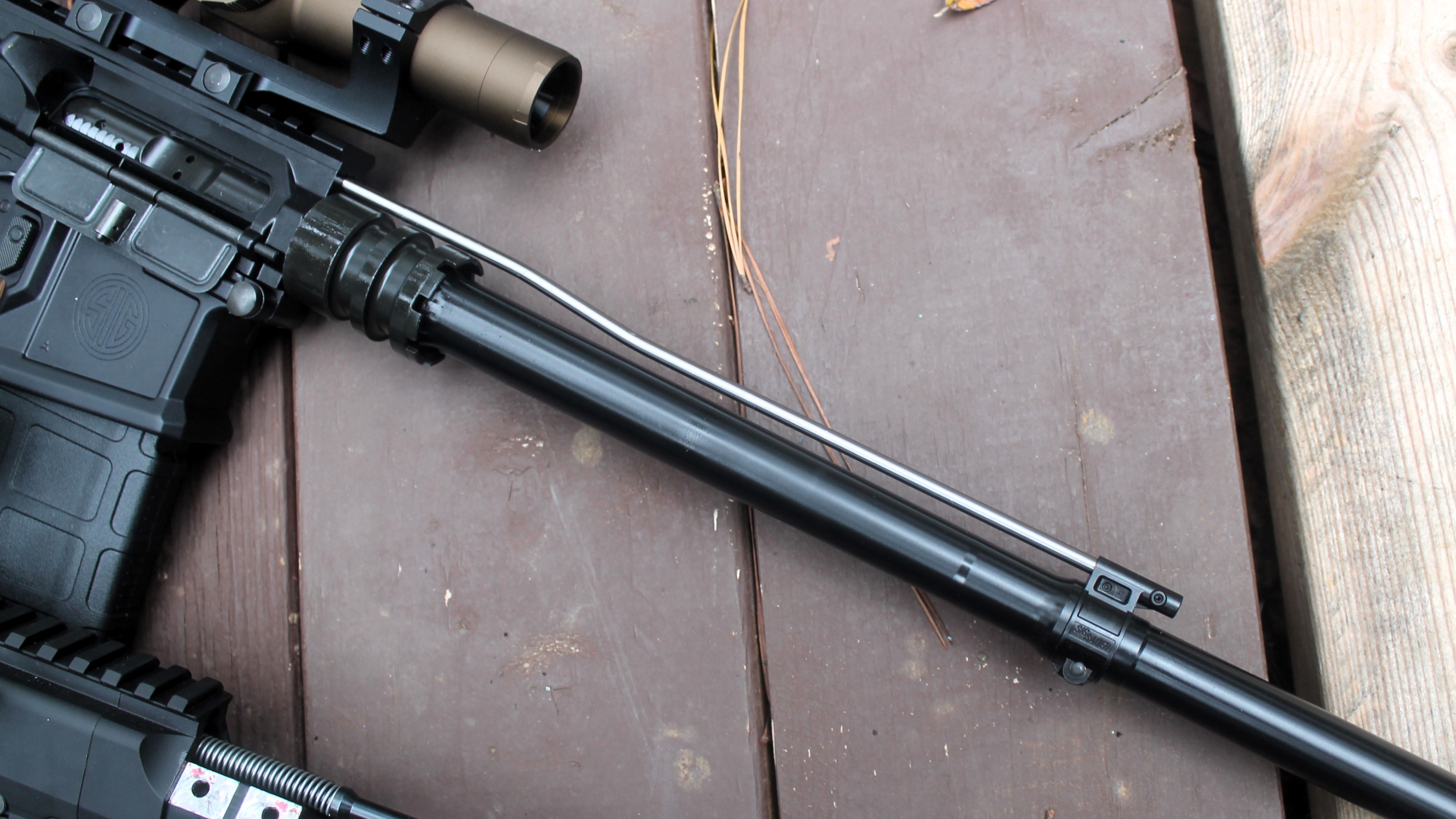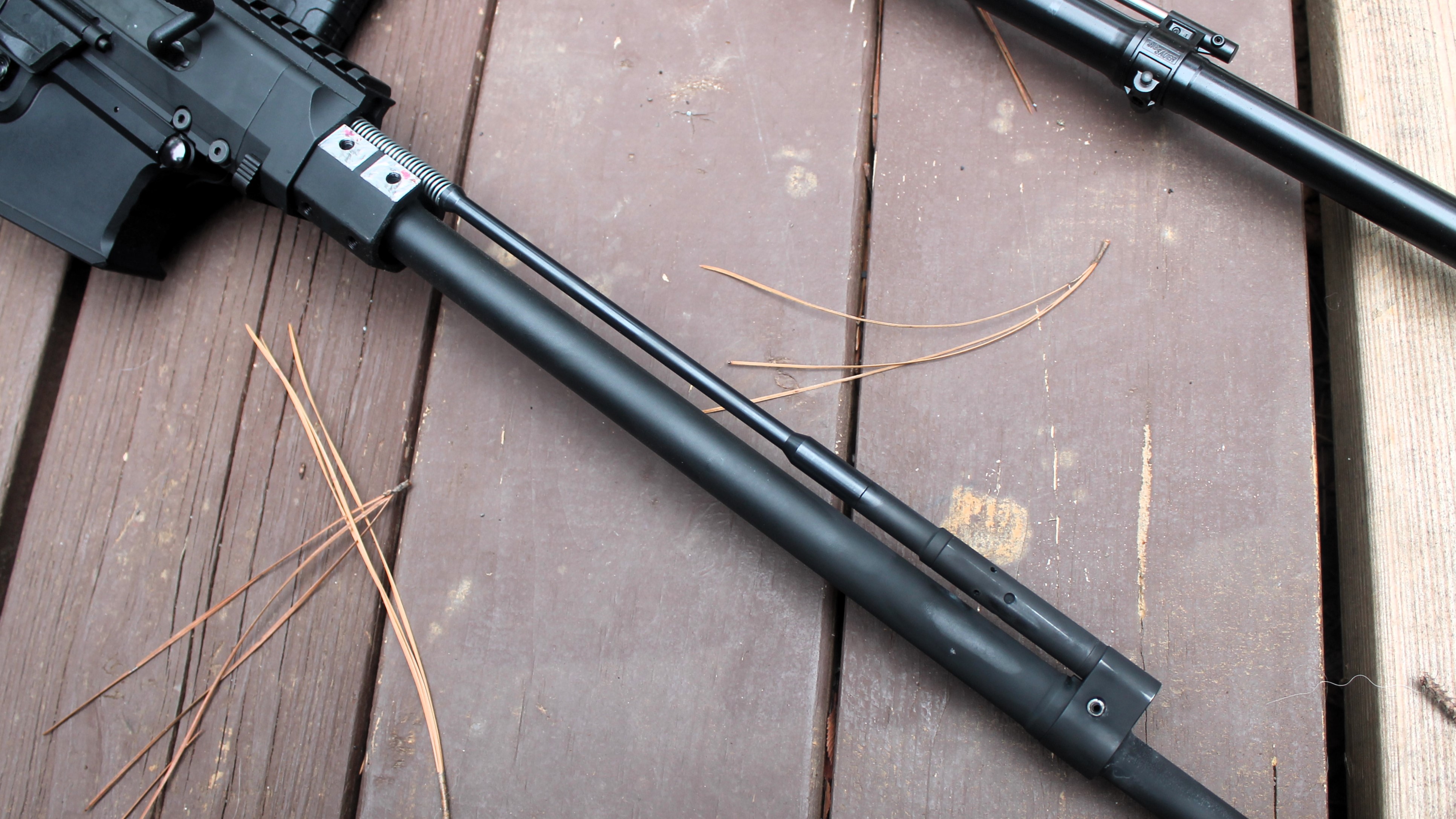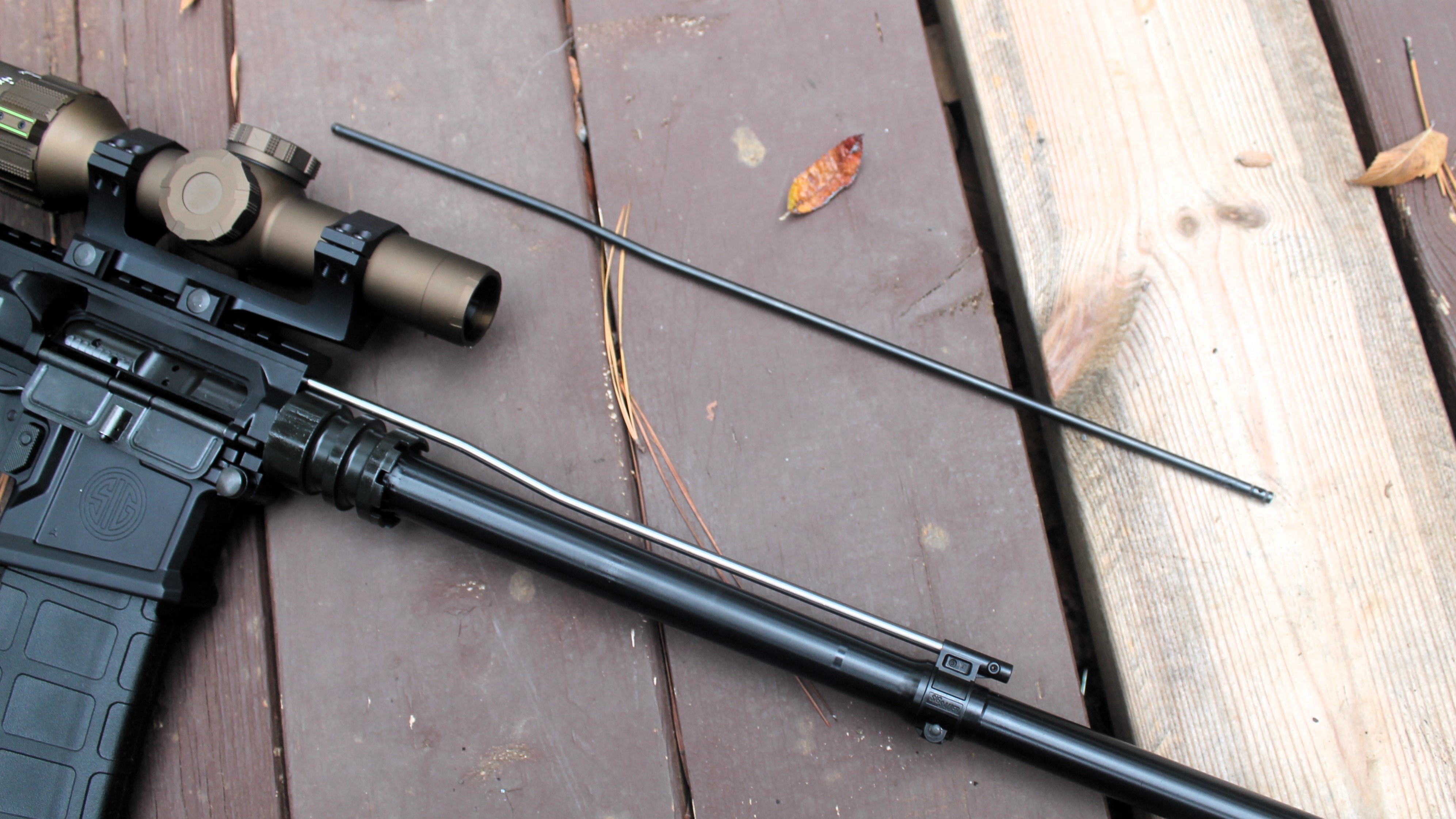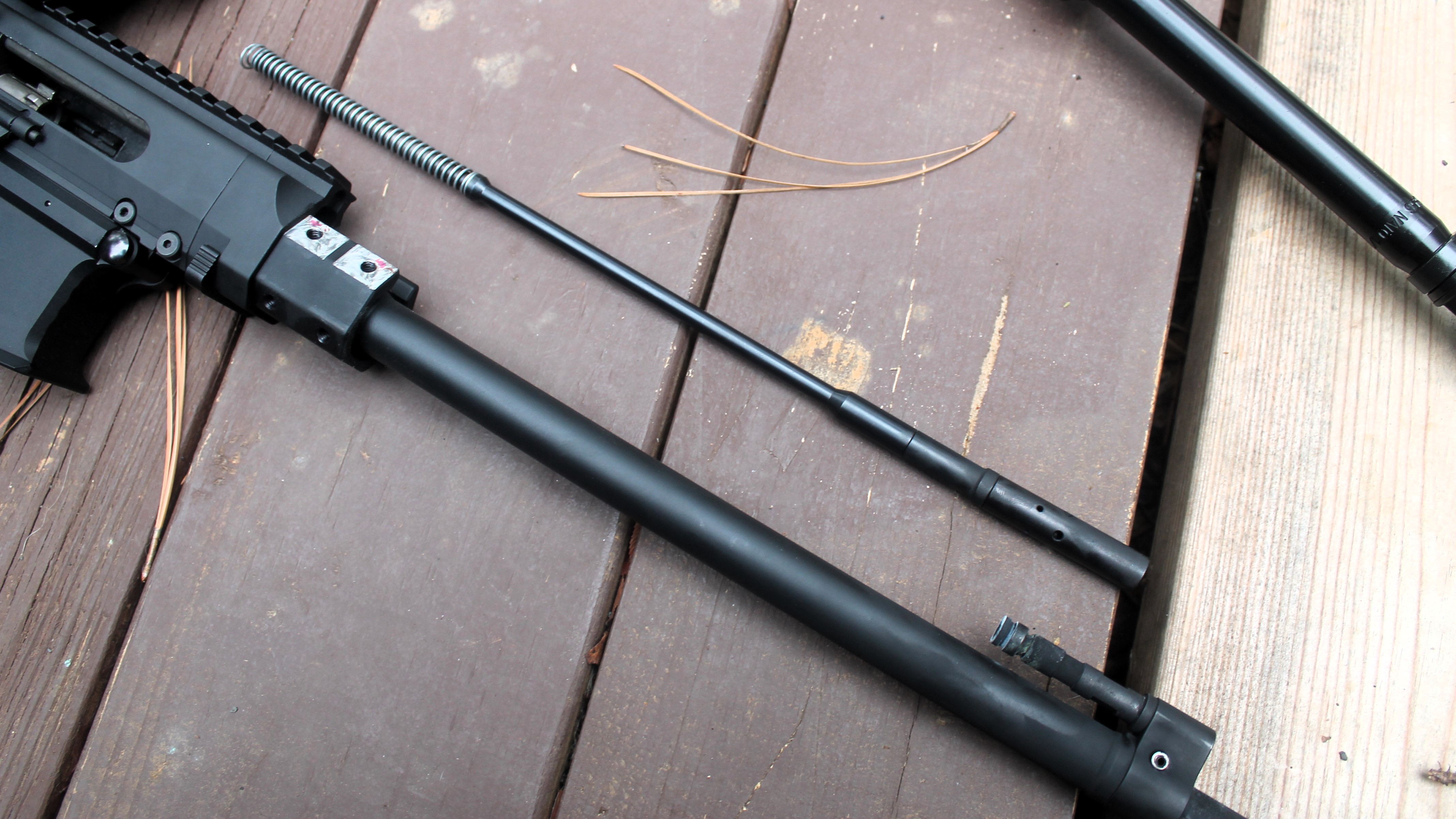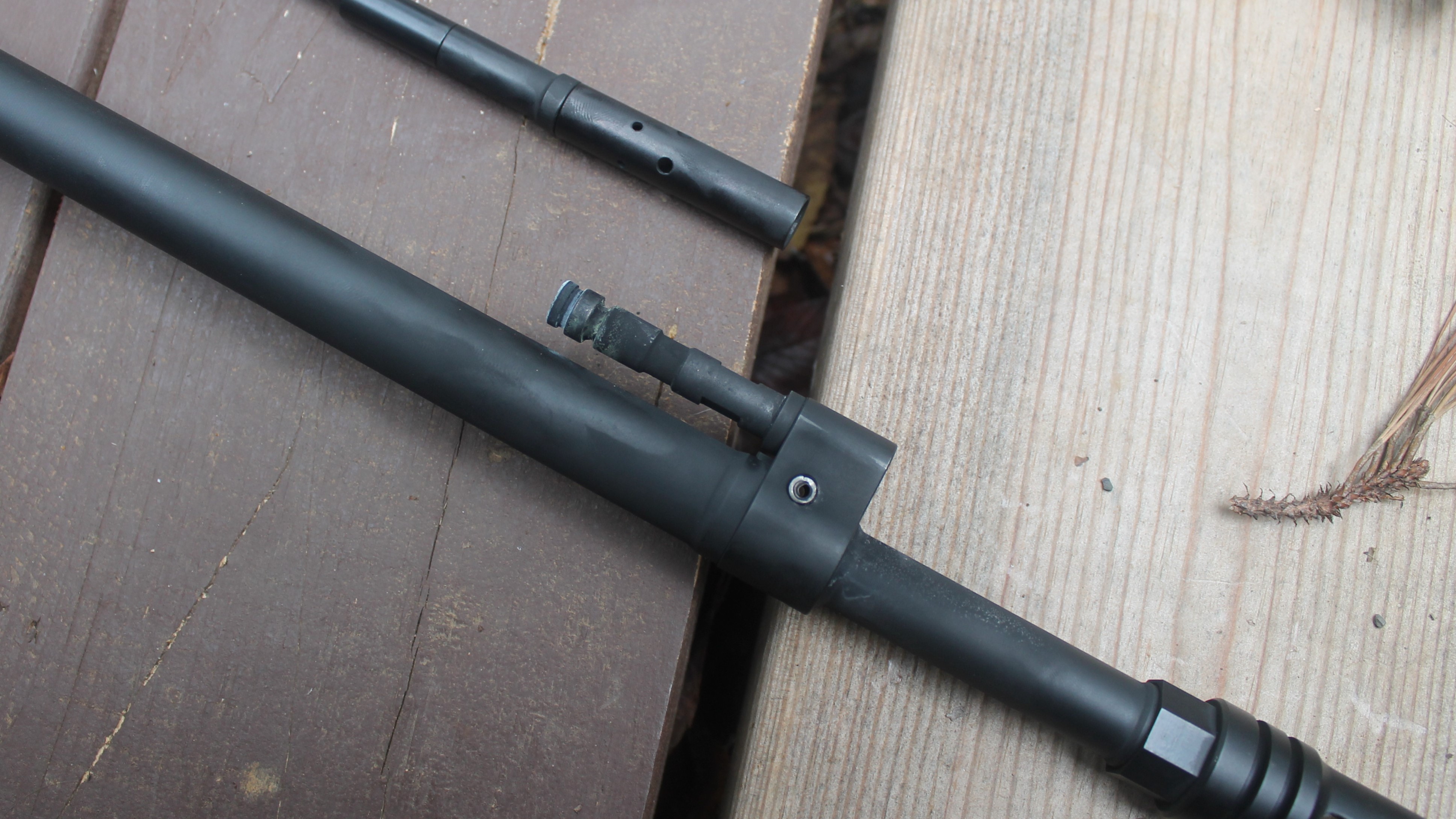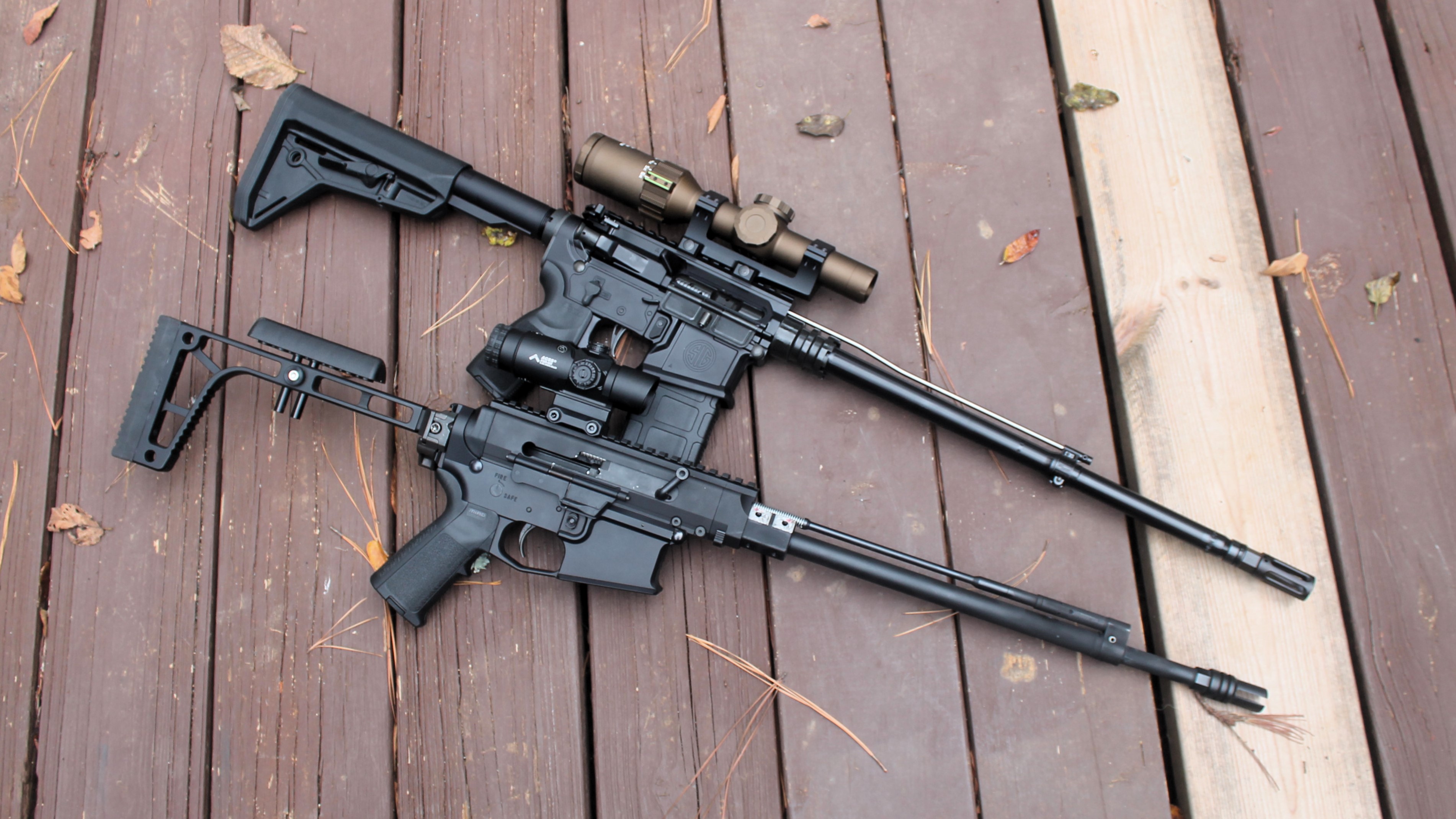Like your computer or phone, all firearms have what gun nerds call an “operating system.” But instead of running Microsoft Word or Roller Coaster Tycoon, a gun’s operating system performs the eight functions needed to fire a bullet: feeding, chambering, locking, firing, unlocking, extracting, ejecting, and cocking.
AR-15’s have an operating system as well, and the two most common are “direct impingement” (often called “gas”) and “gas piston” (or simply, “piston”). Each comes with advantages and disadvantages, and we’ll be running through all of them in this edition of AR-15 Workbench.
Direct Impingement: How It Works
The original AR-15 used a direct impingement system, and so the vast majority of AR-platform rifles today do as well. In this system, a gas block positioned somewhere along the barrel siphons off a small amount of gas as it travels down the bore. This gas is directed along a hollow tube back towards the action, where it is used to push the bolt carrier group towards the rear of the gun. This unlocks the bolt, ejects the spent casing, cocks the hammer, and loads a new round once it returns to its forward position.
Gas Piston: How It Works
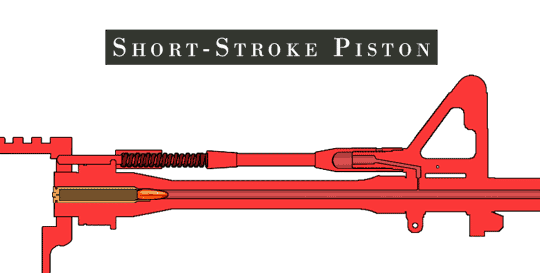
Gas piston systems also use the gas from the cartridge’s burning powder, but they use it in a slightly different way. Rather than travel all the way back to the upper receiver and bolt carrier group, the gas pushes on a piston that is keyed to the bolt carrier. The piston performs the same function as the gas in a direct impingement system, cycling the bolt and working the action.
Pros and Cons (Plus a Little Mythbusting)
You should know at the outset that both systems can be reliable and accurate with proper care and maintenance. As with most things gun-related, don’t feel the need to go out and buy something new just because some rando on the Internet tells you to (though don’t let me stop you).
That being said, there are real pros and cons to each system. Direct impingement systems tend to be lighter since their only components are a gas block and hollow steel tube. Depending on their design, piston systems have a solid steel operating rod along with a spring, gas block, and other pieces that allow the proper amount of gas to escape. All of this weight adds up, and it’s also located along the barrel, which isn’t usually where you want any extra ounces.
Direct impingement systems are also usually more accurate. The back and forth movement of the piston can alter barrel harmonics and make repeatability more difficult. This issue is probably overstated (direct impingement AR’s aren’t always accurate, either), but my experience with the BRN-180 pictured below adheres to this trend. I’ve never been able to do much better than 2 MOA, even with quality match ammo.
If DI systems are lighter and more accurate, why would anyone want a gas piston system? Fans say it’s because they’re cleaner, cooler, and therefore, more reliable. You’ve probably noticed that even though you’ve never dropped your AR in the dirt, and you keep it in a clean safe, it still gets filthy. That’s because all the gas that’s siphoned back into the receiver carries carbon and other contaminants. Carbon adheres to the metal, mixes with the oil, and turns a pristine firearm into a bona fide mess.
Gas piston systems cut down on that mess by keeping more gas out of the receiver. Those gasses are dispersed towards the muzzle end of the gun and never reach the receiver, which also keeps the bolt carrier cooler. Less carbon buildup makes for a more reliable semi-auto that doesn’t need to be cleaned as often and will stay field-ready longer.
That, at least, is the theory, and there is some truth to it. But piston guns still get carbon buildup in the receiver. There is still some blowback that comes directly from the bore as the bolt unlocks and moves rearward in the receiver, and junk also makes its way into the receiver from spent and extracted cases.
As you can see from these images, carbon can also build up around the gas block and portion of the piston system that siphons off the gas. This doesn’t necessarily cause reliability issues, but the idea that piston systems are perfectly clean doesn’t comport with reality.
Last Shot
If I’m recommending an operating system for an AR-15, I’m going with a direct impingement system. They’re cheaper, lighter, and easier to maintain, and reliability isn’t an issue as long as they’re kept well lubricated.
That being said, there’s nothing wrong with gas piston systems. AK-47’s use a kind of piston system, and they’re one of the most common and reliable rifles ever devised. The important thing is to understand how your operating system works and keep it (reasonably) clean and lubricated. If you do that, your success in the field will depend far more on the hunter behind the gun than the gun’s internal workings.
Read the full article here

